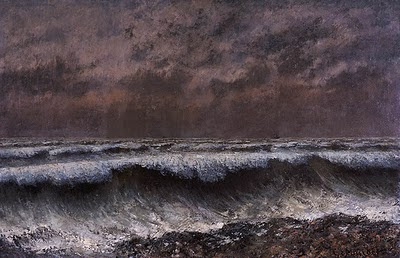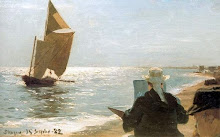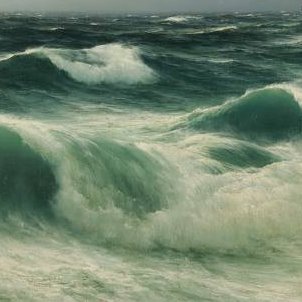Top: 15.5 x 39.5 inches
The Circle of the Sea
The American painter (Thomas) Alexander Harrison 1853 - 1930, was best known for his marines. In The Circle of the Sea, he has captured the nacreous (pearly) effect of evening light.
Harrison rented a ramshackle cottage near the Brittany town of Beg-Meil, and each evening raced to the dunes to watch the sun set over the ocean. In late-summer 1896, he was joined there by struggling writer Marcel Proust and composer Reynaldo Hahn. He opened their eyes to how light plays on water:
"We have seen the sea successively turn blood red, purple, nacreous with silver, gold, white, emerald green, and yesterday we were dazzled by an entirely pink sea specked with blue sails."
Hahn is considered the inspiration for the title character in Proust's attempted first novel
Jean Santeuil, but another character, "C", seems to be based on Harrison, along with aspects of the character Elstir, the painter in
Remembrance of Things Past.
His brother, L. Birge Harrison (1854 -1929), also a painter, particularly successful in snow scenes, was a pupil of the École des Beaux Arts, Paris, under Cabanel and Carolus-Duran. Another brother, Butler Harrison (d. 1886), was a figure painter.













































































